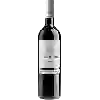
Château de PennautierTerroirs d'Altitude Cabardès
This wine is a blend of 4 varietals which are the Cabernet franc, the Cabernet-Sauvignon, the Côt and the Merlot.
In the mouth this red wine is a powerful with a nice balance between acidity and tannins.
This wine generally goes well with beef, veal or pasta.
Taste structure of the Terroirs d'Altitude Cabardès from the Château de Pennautier
Light | Bold | |
Smooth | Tannic | |
Dry | Sweet | |
Soft | Acidic |
In the mouth the Terroirs d'Altitude Cabardès of Château de Pennautier in the region of Languedoc-Roussillon is a powerful with a nice balance between acidity and tannins.
Wine flavors and olphactive analysis
On the nose the Terroirs d'Altitude Cabardès of Château de Pennautier in the region of Languedoc-Roussillon often reveals types of flavors of cherry, oaky or smoke and sometimes also flavors of blackberry, red fruit or vanilla.
Food and wine pairings with Terroirs d'Altitude Cabardès
Pairings that work perfectly with Terroirs d'Altitude Cabardès
Original food and wine pairings with Terroirs d'Altitude Cabardès
The Terroirs d'Altitude Cabardès of Château de Pennautier matches generally quite well with dishes of beef, pasta or veal such as recipes of baeckeoffe, tagliatelle with foie gras or sauté of doe stroganoff.
Details and technical informations about Château de Pennautier's Terroirs d'Altitude Cabardès.
Discover the grape variety: Cabernet franc
Cabernet Franc is one of the oldest red grape varieties in Bordeaux. The Libourne region is its terroir where it develops best. The terroirs of Saint-Emilion and Fronsac allow it to mature and develop its best range of aromas. It is also the majority in many blends. The very famous Château Cheval Blanc, for example, uses 60% Cabernet Franc. The wines produced with Cabernet Franc are medium in colour with fine tannins and subtle aromas of small red fruits and spices. When blended with Merlot and Cabernet Sauvignon, it brings complexity and a bouquet of aromas to the wine. It produces fruity wines that can be drunk quite quickly, but whose great vintages can be kept for a long time. It is an earlier grape variety than Cabernet Sauvignon, which means that it is planted as far north as the Loire Valley. In Anjou, it is also used to make sweet rosé wines. Cabernet Franc is now used in some twenty countries in Europe and throughout the world.
Last vintages of this wine
The best vintages of Terroirs d'Altitude Cabardès from Château de Pennautier are 2017, 2015, 2010, 2011 and 2008.
Informations about the Château de Pennautier
The Château de Pennautier is one of of the world's greatest estates. It offers 24 wines for sale in the of Cabardès to come and discover on site or to buy online.
The wine region of Cabardès
Cabardes is a relatively small appellation for red and rosé wines produced in the hills just North of Carcassonne in Southern France. The appellation was introduced in 1999, to represent and ensure the quality of the wines, which have been produced here since Roman times. The Languedoc-Roussillon/cabards">Cabardès catchment area, situated in the foothills of the Montagne Noire, is on the border between the Languedoc-Roussillon and the South West of France. This dual identity is reflected in the Grape varieties that make up the wines of the appellation: Grenache and Syrah from the south and east of France; Cabernet Franc, Cabernet Sauvignon and Merlot from the southwest and Bordeaux.
The wine region of Languedoc-Roussillon
Languedoc (formerly Coteaux du Languedoc) is a key appellation used in the Languedoc-Roussillon wine region of southern France. It covers Dry table wines of all three colors (red, white and rosé) from the entire region, but leaves Sweet and Sparkling wines to other more specialized appellations. About 75% of all Languedoc wines are red, with the remaining 25% split roughly down the middle between whites and rosés. The appellation covers most of the Languedoc region and almost a third of all the vineyards in France.
The word of the wine: Acescence
An alteration in wine also known as pitting (hence the expression piqué wine), due to the presence of acetic acid and ethyl acetate, and characterized by a vinegar-like odor.












